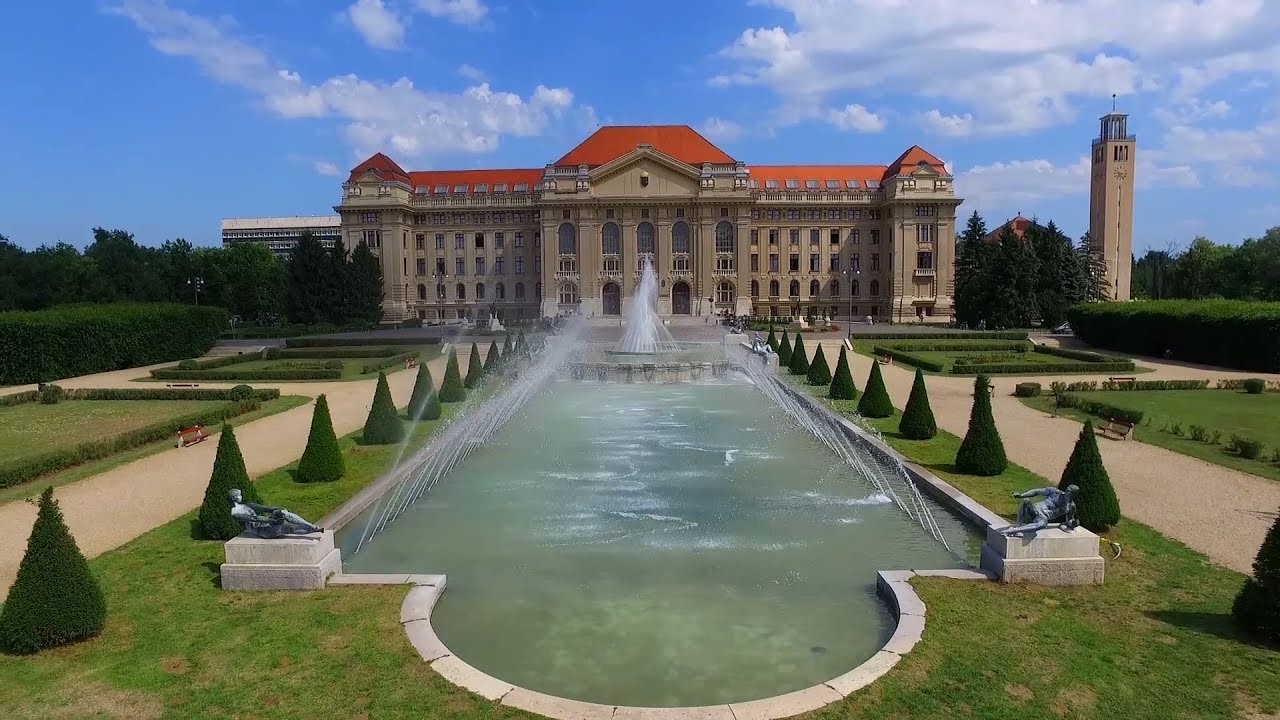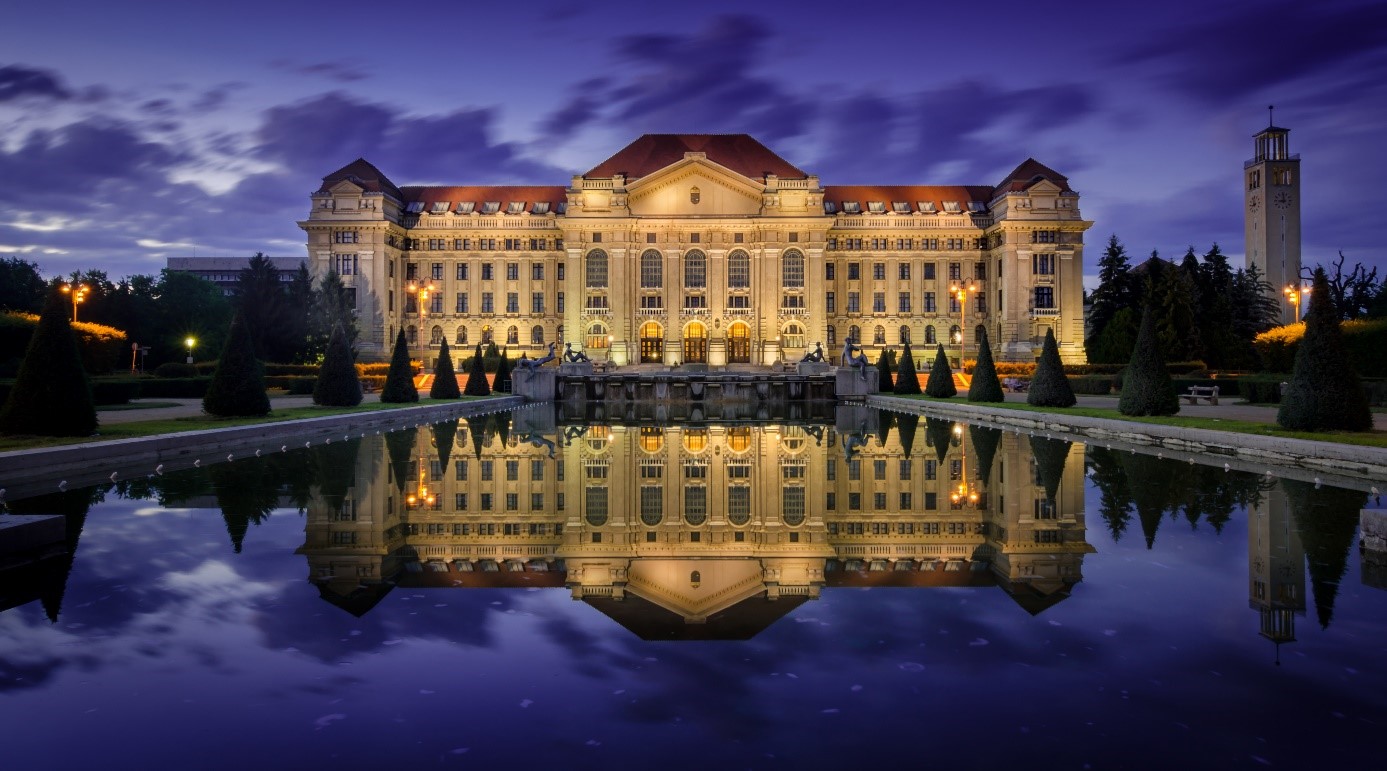MAPS:
Main Building of the University
Hungary is located in the heart of Europe, in the basin of the Carpathian Mountains. With a population of nearly ten million, it counts as a medium-sized Member State of the European Union.
lts capital is Budapest, which is the country’s largest city and also its most visited tourist destination. Hungary is a country rich in natural treasures.
Hungary is the 11th most popular tourist destination in Europe. Particularly popular areas within the country include Budapest, Lake Balaton and the Danube Bend, but the Tokaj wine region, the Mátra and Bükk Mountains, Debrecen and Hortobágy, as well as Sopron and the Fertő Lake area are also popular. The country hosts numerous art and music festivals, touristic and sporting events each year. Some examples include “Sziget” [Island of Freedom] Festival in Budapest, the Flower Carnival in Debrecen, as well as the Bartók Plus Opera Festival and the CineFest lnternational Film Festival in Miskolc.
Throughout history, Hungary has always made significant contributions to the global treasures of culture, in the areas of arts, music, literature, sports and sciences.
There is a multitude of natural landscapes of exceptional beauty, historic fortifications, and protected monuments of diverse architectural styles in the country. Hungarian folk music is famous around the world, and has inspired major composers such as Johannes Brahms, Franz Liszt, Béla Bartók and Zoltán Kodály. Gastronomy is a noteworthy part of Hungarian culture, which is shown, in addition to the popularity of national dishes, by the wide range of gastronomy festivals. Thanks to the unmatched diversity of Hungarian wine regions, such Hungarian wines have become world famous as the “Tokay aszú”, the “bikavér” [bull’s bloodl of Eger, or the “szürkebarát” [grey monk] of Badacsony.

Debrecen has a population over 200 thousand, and the city is the spectacularly developing centre of Eastern Hungary.
The name of the town is first mentioned in written records in the 13th century. lt was given the rank of town more than 650 years ago, in 1361.
Debrecen was famous across Europe for its fairs and schools. lt is located at the cross-roads of major routes of transportation across the Carpathian Basin. Fitting to its role as a regional centre, it has excellent accessibility. From Budapest, it can be most easily reached via the motorway system. Railway and bus services connect the city with other regions in every direction.
Debrecen Airport is the only permanently open international airport in Hungary outside of Budapest. lt is connected to all major hubs of the continent with scheduled flights. The historic centre of Debrecen offers a fascinating number of attractions and sights of cultural significance. From the towers of the Great Reformed Church, one can enjoy a wonderful panorama of the city, while the top of the water tower opens up vistas onto the extensive Great Forest. Additional cultural attractions include the Truncated [Small] Church, the 150-year-old Csokonai Theatre, and St. Anna Cathedral. ln the library and museum of the Reformed College, founded in 1538, some artefacts unique even around the world are on display: nearly 17 thousand objects are held here, including a collection of applied arts showcasing the treasures of Hungarian silversmiths’ works and embroidery culture.
Debrecen is a vibrant and modern city, where one can never be bored. A range of cafés, ambient patios and dance clubs offer the chance of a pleasant evening out. From early spring into late autumn, one music festival is followed by the next.
The services of Aquaticum Spa and Adventure Water Park, based on the thermal water, offer relaxation and thrills alike. Additional venues promising a pleasant time are the Great Forest area with its outdoor theatre, the Mist Theatre fountain, and the “Békás” [Froggy] Pond. lt is this area also where Campus Festival, attracting approximately 100 thousand visitors each year, as well as the multiday events of the Wine Carnival and the Jazz Festival, also with crowds in the thousands, are held. Hungary’s largest student club, called Hall, was recently opened within the building of “Nagyerdei” Stadium, which is the venue for spectacular, exciting concerts.
Border-Crossing and Customs Information
Visa exemption for travel to Hungary
Under the provisions of Regulation 610/2013/EU, which entered into effect on 19 July 2013, citizens of third countries, including those exempt from visa requirements, may only enter the Schengen area with travel documents that are valid for at least 3 months after the date of leaving the Schengen area. The travel documents cannot have a date of issue older than 10 years.
Citizens of countries in the European Economic Area [EEA] can enter Hungary without a visa and stay up to ninety days without any special permit. The rules of traveling to Hungary with national identity cards have been unchanged since 21 December 2007, when Hungary became a member of the Schengen area.
Citizens of EEA countries can enter Hungary with their valid national identity cards. These countries include: Austria, Belgium, Bulgaria, Cyprus, the Czech Republic, Estonia, Finland, France, Germany, Greece, ltaly, Liechtenstein, Lithuania, Luxembourg, Malta, the Netherlands, Poland, Portugal, Romania, Slovakia, Slovenia, and Spain. Denmark, lceland, lreland, Latvia, Norway and the United Kingdom are also members of the EEA, but they do not issue national 10 cards, and so their citizens can only enter the country with valid passports.
Switzerland is not a member of the EEA, but has been a member of the Schengen Zone since 12 December 2008, and so Swiss citizens can also enter Hungary with their valid national 10 cards.
Citizens of Sweden may enter with a valid passport or with national identification cards issued after 1 October 2005 and showing the citizenship of their holder.
On the basis of an international treaty, citizens of Croatia may enter Hungary with their personal identity cards for up to 90 days, provided that their purpose of visit is not to work or engage in any other income-generating activity.
Climate
The climate of Hungary is determined by three major European climate zones, continental, oceanic and Mediterranean,with the country located at the meeting point of these. On the basis of the average monthly mean temperatures, calculated on the bas is of data over many years, the hottest month in Miskolc and Debrecen is July, and the average temperature variation is 22.1 °C and 22.3°C respectively. The maximum length of daytime hours is in the summer months, and it is 230 to 250 hours per month in Miskolc, and 250 to 270 hours per month in Debrecen . ln July, the intensity of UV-B radiation is strong, in the range of 5 to 7, and sometimes even higher.
The average precipitation is 533 mm in Miskolc and 540 mm in Debrecen, showing a typical distribution over the year with the summer half of the year having more rain and the winter half being dryer. The average annual number of sunshine hours is 1,800 in Miskolc and 1,960 in Debrecen, but this shows great variation over the years.
Medicines
Those taking medication on a regular basis may bring medicines in the quantities prescribed by their physicians, in accordance with the length of their travels.

